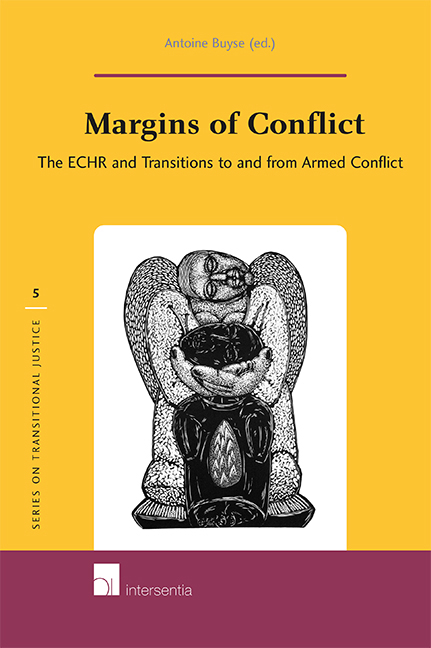Book contents
- Frontmatter
- Preface
- Contents
- Human Rights without Peace? The European Court of Human Rights and Conflicts Between High Contracting Parties
- Crisis Situations, Counter Terrorism and Derogation from the European Convention of Human Rights. A Threat Analysis
- Really Out of Sight? Issues of Jurisdiction and Control in Situations of Armed Conflict under the ECHR
- The Use of Interim Measures Issued by the European Court of Human Rights in Times of War or Internal Conflict
- Foretelling the future, facing the past. Hate speech and conflict situations under the ECHR
- The Duty to Take Preventive Operational Measures. An Adequate Legal Tool to Hold States Responsible in Enforced Disappearance Cases?
- Airborne or Bound to Crash? The Rise of Pilot Judgments and Their Appeal as a Tool to Deal with the Aftermath of Conflict
Airborne or Bound to Crash? The Rise of Pilot Judgments and Their Appeal as a Tool to Deal with the Aftermath of Conflict
Published online by Cambridge University Press: 16 December 2020
- Frontmatter
- Preface
- Contents
- Human Rights without Peace? The European Court of Human Rights and Conflicts Between High Contracting Parties
- Crisis Situations, Counter Terrorism and Derogation from the European Convention of Human Rights. A Threat Analysis
- Really Out of Sight? Issues of Jurisdiction and Control in Situations of Armed Conflict under the ECHR
- The Use of Interim Measures Issued by the European Court of Human Rights in Times of War or Internal Conflict
- Foretelling the future, facing the past. Hate speech and conflict situations under the ECHR
- The Duty to Take Preventive Operational Measures. An Adequate Legal Tool to Hold States Responsible in Enforced Disappearance Cases?
- Airborne or Bound to Crash? The Rise of Pilot Judgments and Their Appeal as a Tool to Deal with the Aftermath of Conflict
Summary
INTRODUCTION
The 50th anniversary of the European Court of Human Rights this year is an occasion for both celebration and apprehension. The Court started functioning in 1959 as the heart of the Council of Europe, an organization set up after World War II to protect democracy against dictatorship and thereby to avoid the recurrence of the massive human rights violations of the war. From a timid beginning the Court has grown into a full-time institution, successfully dealing with thousands of cases each year. Its case law is generally perceived to be among the most developed and extensive of all international human rights institutions and most of its judgments are routinely implemented by the State Parties to the European Convention on Human Rights (ECHR).
However, for over a decade dark clouds have been gathering above Strasbourg. First, the number of applications has been rising so sharply – partly due to the accession of a large number of new State Parties to the ECHR – that the very work and survival of the Court seems to be at risk. As one scholar has put it, the Court is fighting with its back to the wall. Secondly, after decades of adjudicating peace-time human rights problems, the Court has since the 1990s been starkly reminded of the issues which for long seemed to belong to the past. Armed conflicts in the Balkans and the Caucasus have brought cases to Strasbourg concerning arbitrary killings, enforced disappearances, destruction of housing, and large-scale displacement. The two problems have one thing in common: their high numbers. It is precisely because of these numbers that the Court has started to deal creatively with massive violations of human rights by way of so-called pilot judgments. This article will specifically assess whether pilot judgments can be a useful tool to deal with large-scale violations as a result of armed conflict. First, it will look at what pilot judgments are and in which cases the Court has applied the pilot methodology. Secondly, the main reasons for setting up the pilot judgment procedure will be considered. Thirdly, this article will analyze the problems of the pilot procedure, such as its legal basis and the position of applicants in comparable cases.
- Type
- Chapter
- Information
- Margins of ConflictThe ECHR and Transitions to and from Armed Conflict, pp. 175 - 196Publisher: IntersentiaPrint publication year: 2010



